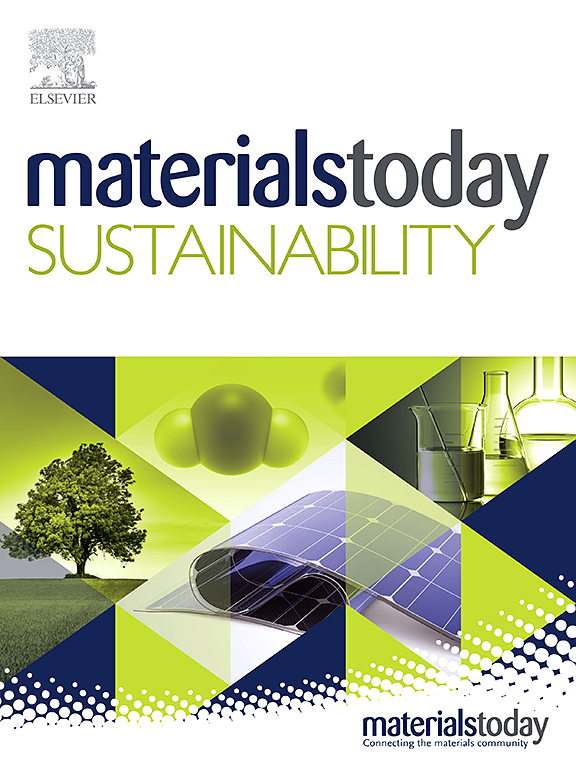高熵合金作为第四次工业材料的前景与局限
IF 7.9
3区 材料科学
Q1 GREEN & SUSTAINABLE SCIENCE & TECHNOLOGY
引用次数: 0
摘要
高熵合金(HEAs)是一种创新的多主元素合金,具有独特的性能,使其成为第四次工业革命(工业4.0)材料的潜在候选者。HEAs具有多主元素组成的特点,具有优异的机械强度、热稳定性、耐腐蚀性和定制的功能特性。它们利用高构型熵来提供优于传统合金(如钢、铝和钛)的性能。HEAs在包括航空航天、汽车、能源和生物医学在内的关键领域显示出了巨大的潜力,例如喷气发动机中的NbMoTaW和医疗植入物中的TiZrNbTaMo显示了它们在极端条件下的多功能性。然而,诸如高加工成本、大规模生产困难、对相稳定性的理解有限以及需要先进的计算模型来预测材料行为等挑战必须得到解决。本文探讨了HEAs作为第四次工业材料的前景,讨论了其优势、潜在应用以及实现其全部工业潜力必须克服的限制。通过整合新兴制造技术,如增材制造和计算材料设计,HEAs可以彻底改变材料工程,并为工业4.0做出重大贡献。从小众创新向工业支柱转型,反映了钢铁在第一次工业革命中的决定性影响,以及硅在第三次工业革命中的决定性影响,从而巩固了它们在工业4.0高性能和可持续未来的前沿地位。本文章由计算机程序翻译,如有差异,请以英文原文为准。
The prospect and limitation of high entropy alloy as 4th industrial material
High-entropy alloys (HEAs) have emerged as an innovative family of multi-principal element alloys with unique properties that position them as potential candidates for the fourth industrial revolution (Industry 4.0) materials. Characterized by their multi-principal element composition, HEAs exhibit exceptional mechanical strength, thermal stability, corrosion resistance, and tailored functional properties. They leverage high configurational entropy to deliver superior performance over traditional alloys such as steel, aluminum, and titanium. HEAs have demonstrated remarkable potential in critical sectors, including aerospace, automotive, energy, and biomedicine, with examples like NbMoTaW in jet engines and TiZrNbTaMo in medical implants showcasing their versatility under extreme conditions. However, challenges such as high processing costs, difficulties in large-scale production, limited understanding of phase stability, and the need for advanced computational models to predict material behavior must be addressed. This paper explores the prospects of HEAs as the fourth industrial material, discussing their advantages, potential applications, and the limitations that must be overcome to realize their full industrial potential. By integrating emerging manufacturing techniques such as additive manufacturing and computational material design, HEAs could revolutionize material engineering and contribute significantly to Industry 4.0. Transitioning from niche innovations to industrial mainstays, mirroring the defining impact of steel in the First Industrial Revolution and silicon in the Third, thereby cementing their place at the forefront of Industry 4.0’s high-performance and sustainable future.
求助全文
通过发布文献求助,成功后即可免费获取论文全文。
去求助
来源期刊

Materials Today Sustainability
Multiple-
CiteScore
5.80
自引率
6.40%
发文量
174
审稿时长
32 days
期刊介绍:
Materials Today Sustainability is a multi-disciplinary journal covering all aspects of sustainability through materials science.
With a rapidly increasing population with growing demands, materials science has emerged as a critical discipline toward protecting of the environment and ensuring the long term survival of future generations.
 求助内容:
求助内容: 应助结果提醒方式:
应助结果提醒方式:


